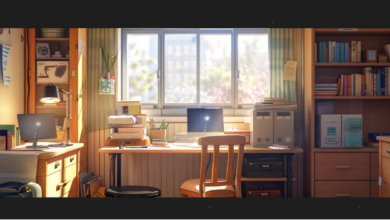8 Predictions About Student Life 100 Years from Now

The life of students after 100 years will be what we see in technology-based Hollywood movies. Use of Virtual and Augmented reality, incorporating AI and BCI technologies to transform the whole concept of educational systems. However, this is a big and brave prediction after observing how educational institutes have kept themselves back from utilising already available technologies. But some areas where technologies have been introduced are our hope for the future.
We have compiled this article to make some bold predictions about the life of students in 2124, precisely 100 years from today. We have provided some statistical data to back our predictions where required. So, without further delay, let’s look into the life of students a hundred years from now.
What Will Life of Students Be Like 100 Years from Now? 8 Predictions
The lives of students in the next century will be completely transformed. We might see students learning virtually from their habitats and utilising the latest technologies like BMI to make the most of their time. We will see different approaches to the learning outcomes of their coursework writings and subject matter information.
Are you excited to see how students will live 100 years from now? Put on your imaginative mask, and let’s examine the detailed predictions.
1. Virtual and Augmented Reality Integration
Virtual and Augmented reality has been transforming multiple fields of life, including sports, gaming, and the technology business world. As time passes, the need for transformation in the education industry is becoming increasingly relevant. VR and AR technologies can change the way students proceed through their learning habits and struggles to maintain attendance.
We hope students’ lives after 100 years will be as they have wanted them to be for decades. Further enhancement in Virtual and Augmented Reality technologies will engage more senses, making the learning experience more immersive and helping students remember their learning for more extended periods. Although it’s already being integrated and many institutions are utilising the technology, it has not reached the level where this can ease students’ lives.
What Leads to This Prediction?
According to Technavio, the VR market in education is expected to increase at a CAGR of 84.3% in the next four years, 2024-2028. If it continues growing at the same pace, VR technology can be integrated into the whole education sector by the next 100 years.
If we imagine the life of students 100 years from now, the scenes would be unbelievable. Suppose, as a student, you can go for field visits, visit Mars’ surface for research, and dive deeper into the ocean depths. All this seems quite impossible from here, but after one decade, this will be more relatable and seems possible.
2. Personalised & AI-Powered Learning
AI systems are already revolutionising the education sector, making things easier and more virtual for students. Students and teachers use these technologies for assignment submission, online grading, and automatic plagiarism checking to streamline homework and grading scenarios. Artificial intelligence integration seems more relatable and imaginable for students and educators today.
Now, let’s see what improvements or advancements we can expect with AI incorporation in education. It can solve the long-awaited and major pain point of students and education systems: personalised learning. Every student has different strengths and comprehension lacks, different learning styles, and separate problems. This leads to the need to make personalised learning plans according to students’ requirements, abilities, and learning styles.
Artificial intelligence can be used to track students’ performance through available data and make personalised learning recommendations. These systems will detect knowledge gaps, recommend related sources, and adjust the learning and difficulty levels according to students’ cognitive abilities.
3. Remote and Flexible Learning
Students have to rush through different weather conditions, whether it’s raining or storming outside. They have to attend their classes on time, mark their attendance, and start learning immediately; otherwise, their grades will be affected. Although we live in an advanced world where most technologies are available, we are still hesitant to embrace them. However, with the pandemic, we have evolved our education system and explored our options to continue learning.
Because online learning is more flexible and affordable, we might see a significant number of students coming under the umbrella of advanced learning systems. Plus, with technologies like artificial intelligence, virtual reality, and augmented reality, we can expect students’ lives to be how we expect them to be after 100 years. The technological advancements will ease the learning processes, and it will not seem like a punishment anymore. However, we are still unsure how students will write their coursework assignments even after 100 years.
4. Skills Based Education
Georgetown University research states that the cost of a four-year degree has increased 160% over the last four decades, while the earnings of those degree holders have decreased by 19% from 1980 to 2019. These stats indicate that the world will be moving towards skills-based education systems.
Analysing the ongoing trend of skills-based education is a sign that more people are moving towards learning skills instead of traditional education. However, we will also witness a change in the skills students learn in the future compared to today’s skill sets.
5. Brain-Computer Interface
Brain-Computer Interface BCI is a system controlled directly by the human nervous system and also known as brain-machine interface BMI. This system allows users to operate different devices and applications by giving commands through the mind. BMI works by recording brain signals, analysing them, and converting them into commands. This system has revolutionised the lives of people with disabilities. They can control their wheelchairs or communicate with people comprehensively.
We can expect the integration of these brain-mind interface systems into the education sector, allowing differently abled students to pursue their dream careers. These systems can be used to analyse how alert students are and measure their cognitive capabilities and learning pace to tailor teaching schedules and requirements according to their mental abilities.
6. Global Collaboration Platforms
While we observe the significant technological advancements, the global collaboration platform becomes more relevant in the equation. We see students utilising collaboration tools to submit their homework assignments and tasks being assigned and submitted through the same task cards. Multiple collaboration tools are available even now, but incorporating them for educational purposes is not evident until today.
There are hundreds of platforms providing collaboration opportunities, some of which are as follows.
- Zoom
- Google Drive
- Assanna
- Trello
- Slack
- Miro
- Jira
- Airtable
- Crowdhelix
- Microsoft Outlook
- Gantt Pro
However, a number of institutions that offer remote learning systems use these tools. We see 100% reliance on them.
7. Mental Health and Wellness Will be Prioritised
Besides being claimed by many institutes and emphasised by most psychologists, mental health and wellness are not given any importance. From Getting coursework done on tight deadlines to covering heavy syllabi and quizzes, the research is treated more important than the mental stability of students.
In a research conducted in 2022 by Student Minds, 57% of the students self-diagnosed with mental health issues, which indicates the seriousness of the issue and the need to solve them. If the same learning habits and institutional policies went on, we might see all the students leaving their studies due to mental disability. Of course, we can’t afford that, so the education section needs to take immediate action before it gets out of hand.
However, we see some hope left with some institutes taking these issues seriously and some private companies striving to assist students by providing them help with coursework writing and other related services to make their mental conditions more stable. We predict that in 100 years from now, mental health will be more prioritised.
8. Blockchain-Based Credentials
To ensure the safety and privacy of students’ credentials, we might see blockchain used to store their important documents. This will not only protect their credentials from being stolen, replicated, or used without permission, but it will also make it much easier for students to share these documents without the fear of losing them.
The risk of losing original documents increases to an extreme level, especially in government settings, where they are required to be submitted. With blockchain networks, you can share them without the fear of losing them, and saving printed original copies will no longer be required.
Conclusion
If we close this discussion in a nutshell, the lives of students after 100 years will be completely changed and advanced to a level we can only dream of today. By analysing the technological trends and incorporation of advanced systems in the education sector, we can be sure that we might observe these advancements even before completing the 100-year mark.
We have been following traditional educational systems for a long time. Although we are stressed over them, we haven’t made any efforts to incorporate advanced technologies to ease students’ learning processes. But we hope that in the near future, we will start to see reasonable betterments in the education field, which will lead us to shift our education system to new heights.
That being said, we hope our predictions come true and at least the life of students after 100 years will be how we want to see our current students.



